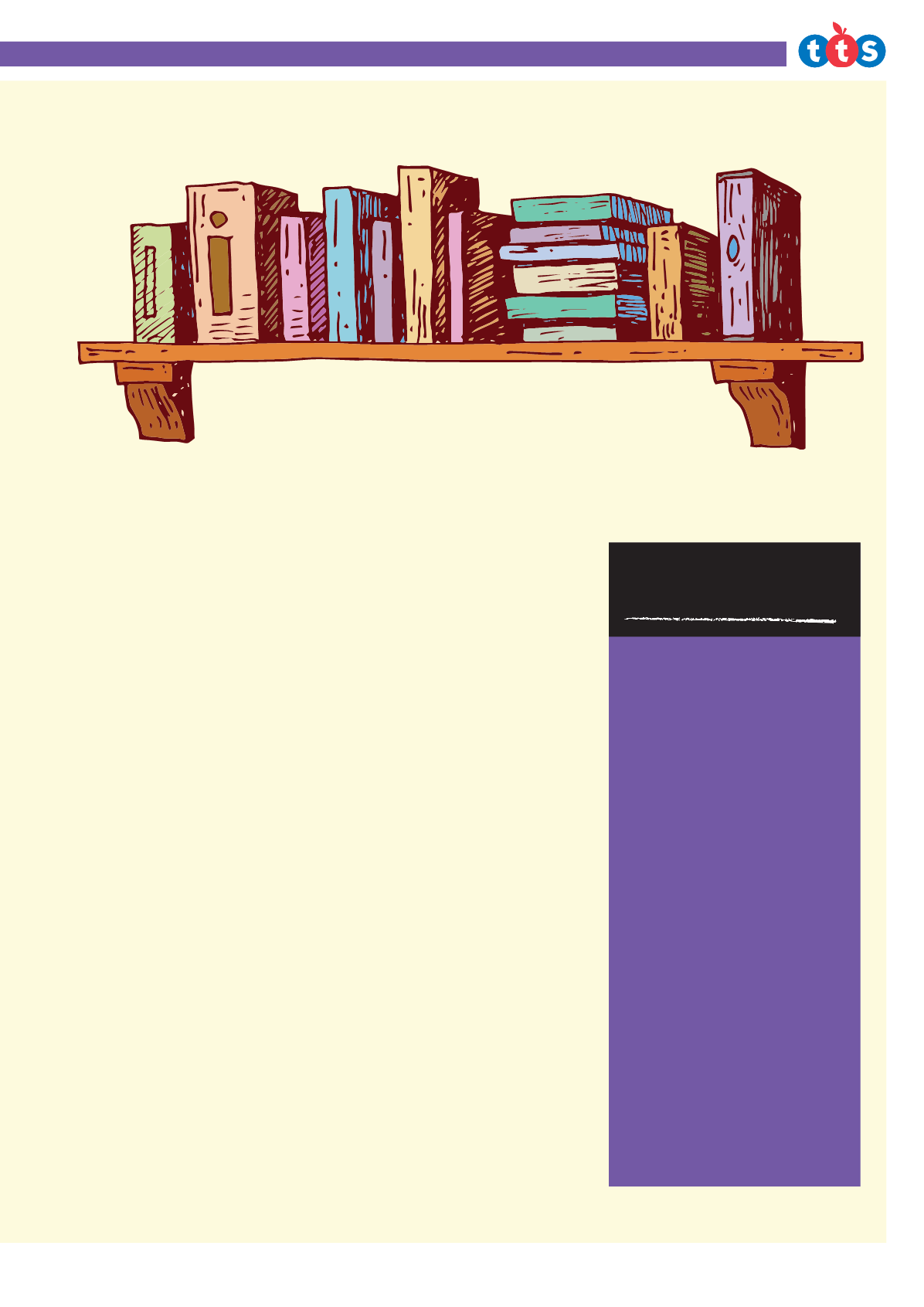
TEACH READING & WRITING
25
TRYTHIS
TOMORROW
According to Lemov, research shows
a clear link between the breadth
anddepth of a child’s knowledge of
vocabulary, andhis or her reading
ability. He suggests a different
approach to introducing newwords
in the classroom. “At themoment, a
teachermight say, ‘Who can tell me
what ‘decrepit’ means?’” he explains.
“Whereupon you get get awhole heap
ofwrong definitions – guesses – and
eventually a ‘correct’ one, thought up
on the spot by a10-year-old. So how
about, instead of that, you give theman
excellent definitionfirst, then spend
time playingwith theword, instead of
guessingwhat itmightmean?Youmight
ask, for example, ‘Do you think you can
be decrepit andwealthy?’ ‘Could a tyrant
ever be decrepit?Why?’ ‘Whatmight a
decrepit person look like?’ This is how
you learn aword’s shades and subtleties
ofmeaning – because, as Isabel Beck
points out inher excellent book
Bringing
Words to Life
, if twowords overlap
80%inmeaning, like imitate andmimic,
we tend to teach themas synonyms; but
actually, it’s the differences between
themthat helpus understand the
nuances of text.”
effectively in direct response to texts.
Can thefirst of these really be applied to
teaching in primary schools, where children
are taking their very earliest steps in the
literacy journey? Absolutely, confirms
Lemov, adding, “It’s become accepted, for
example, that levelling reading books for
children is theway to go. There’s a place for
leveled texts, but students also need to be
comfortable readingwhat’s challenging (and
worthy of challenge). They need both – and I
see the cost of neglecting that, all the time.
High poverty kids arrive at school with low
literacy levels, so they get given books that
don’t challenge – or inspire – them. No one
gives thema great book and says, ‘I’mgoing
to help you enjoy this’. Schools identify them
as ‘poor readers’, and give themeasy reads
byway of supporting them– but in doing so,
they unintentially close doors of possibility
for them.” According to Lemov, there is some
evidence thatmany of the thingswe assume
build a love of reading – such as allowing
children to access easy, instantly appealing
books; choose their own readingmaterials;
and read stories about characters just like
themselves – do not necessary achieve the
desired outcome. “There ismore to reading
than following a snappy adventure,” he
observes. “I didn’t become a reader, really,
until a teacher gavemeHemingway’s
TheOld
Man and the Sea
when I was around 11 or
12; I enjoyed howdemanding it was, yes, but
also the depth of thought involved. There’s
amindset that says children should never
be given books inwhich there aremore than
fivewords on a page they don’t understand
– but I disagree; if we don’t teach children to
unlock—and enjoy unlocking—a text that
challenges them, whowill?”
Sharedstories
Readingwith – and indeed, to – students is
something that Lemov fears is becoming
a dying art in schools. “Just hearing adults
read books aloud helps children understand
the purpose and potential of reading deeply,
meditatively, with sustained concentration,”
he says. “Reading silently; students reading
aloud; teachers reading aloud to pupils – all
three of these options have strengths and
limitations, and in the bookwe advocate
finding the right balance between them. It
would be a gift to children, of course it would,
if theywere all exposed to reading earlier,
read stories by their parents, and surrounded
by books at home. But therewill always be the
disparate impact of parenting and/or setting
for kids. Wemust assumewewill always have
children entering our schoolswho are behind
in reading; and as important tome as the fact
that some youngsters start Reception not
knowing that you read a book fromfront to
back and left to right, is that we still have kids
inYears 5 and 6who have never read a book
in full; never felt that joy, the completion.
Understanding narrative, enlarging the
vocabulary, and unwinding complex syntax
– all these can be achieved through adults
reading books to children that theymight
struggle to decode alone.”
ReadingReconsidered
, by Doug Lemov,
EricaWoolway and ColleenDriggs, is
published byWiley (£21.99)
“It’s become accepted, for example, that levelling reading books
for children is theway to go. There’s a place for leveled texts, but
students also need to be comfortable readingwhat’s challenging”
In association with


